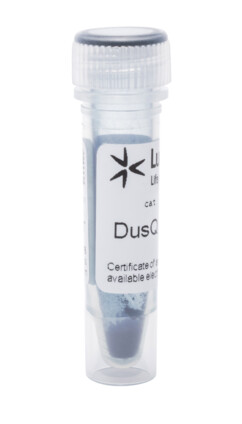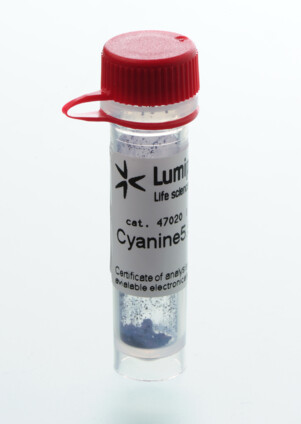TFA-amino modifier CPG 500
| Cat. # | Quantity | Price | Lead time | Buy this product |
|---|---|---|---|---|
| 11860 | 100 mg |
$60
|
in stock | |
| 21860 | 250 mg |
$120
|
in stock | |
| 31860 | 500 mg |
$230
|
in stock | |
| 41860 | 1 g |
$380
|
in stock | |
| 51860 | 5 g |
$1450
|
in stock | |
| 61860 | 10 g |
$2465
|
in stock |

This high load, 500 Å controlled pore glass solid support is designed for the synthesis of oligonucleotides containing up to 50 bases with a 3'-amino group. Amino group is protected with trifluoroacetyl (TFA) protection which is easily removed under standard deblock conditions.
The reagent is based on hydroxyprolinol core - a universal non-nucleoside structure that is naturally 100% chiral (no isomers formed upon condensation), and stable to all conditions of oligonucleotide synthesis and deblock.
Customers also purchased with this product
General properties
| Appearance: | off-white beads |
| Quality control: | NMR 1H and HPLC-MS (95%) of bound reagent, loading measurement |
| Storage conditions: | Storage: 24 months after receival at -20°C. Transportation: at room temperature for up to 3 weeks. Desiccate. |
| MSDS: | Download |
| Product specifications |
Oligo synthesis details
| Pore size, Å: | 500 |
| Typical loading, umol/g: | 50−80 |
| Coupling conditions: | standard coupling, identical to normal nucleobases |
| Cleavage conditions: | ammonia, 2 h at room temperature |
| Deprotection conditions: | identical to protected nucleobases |
Product citations
- Taskova, M.; Uhd, J.; Miotke, L.; Kubit, M.; Bell, J.; Ji, H.P.; Astakhova, K. Tandem Oligonucleotide Probe Annealing and Elongation To Discriminate Viral Sequence. Analytical Chemistry, 2017, 89(8), 4363–4366. doi: 10.1021/acs.analchem.7b00646
This Product is offered and sold for research purposes only. It has not been tested for safety and efficacy in food, drug, medical device, cosmetic, commercial or any other use. Supply does not express or imply authorization to use for any other purpose, including, without limitation, in vitro diagnostic purposes, in the manufacture of food or pharmaceutical products, in medical devices or in cosmetic products.
Short link - lumiprobe.com/sh/p/1A
The count of items is incorrect.


























 $
$ 
